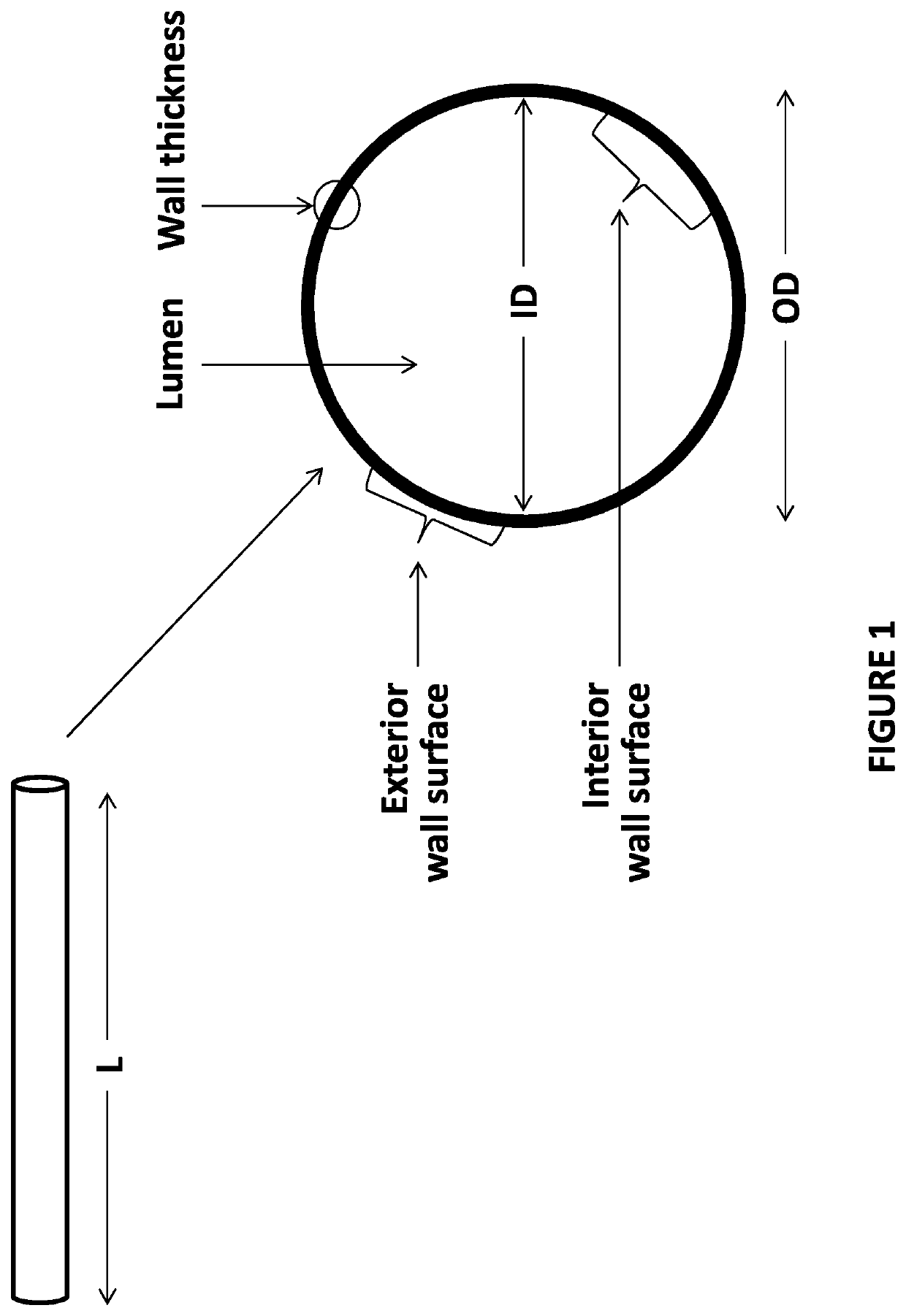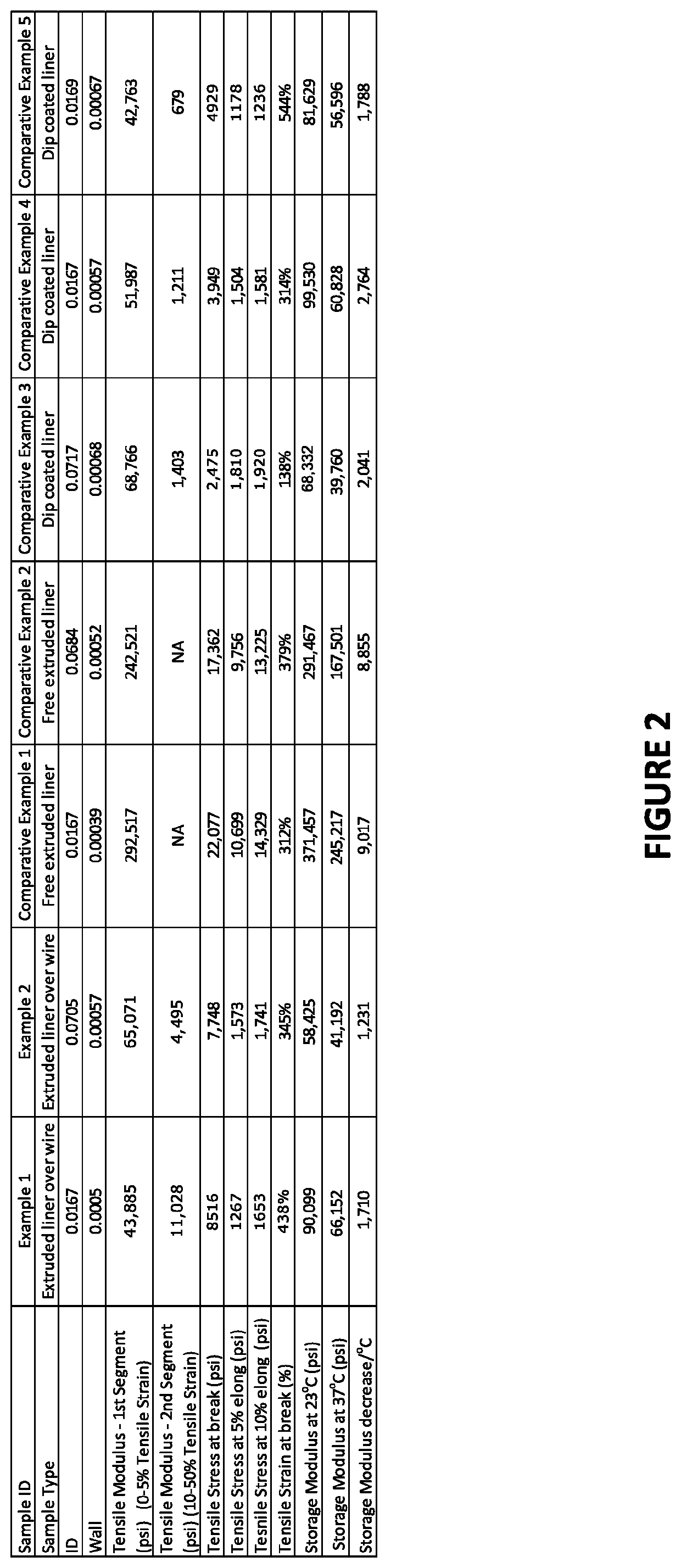Catheter comprising PTFE liner
a thin wall catheter and ptfe technology, which is applied in the direction of catheters, other medical devices, coatings, etc., can solve the problems of affecting the service life of the catheter, the damage to the liner, and the difficulty of delivering the device therethrough, so as to achieve the effect of low tensile modulus, similar flexibility and easy maintenan
- Summary
- Abstract
- Description
- Claims
- Application Information
AI Technical Summary
Benefits of technology
Problems solved by technology
Method used
Image
Examples
example 1
[0067]A PTFE paste extrusion process was employed (using a medium to high reduction ratio lower MW resin grade) to extrude a 0.0005″ thick PTFE layer over an annealed copper wire of 0.0169″ OD, followed by devolatilazation of lubricant and sintering of PTFE over the wire. The PTFE layer thickness was determined as follows. The outer diameter (OD) of the coated wire was measured with a laser. The PTFE coating was removed at one location without stretching the wire. The OD of the exposed wire was then measured by laser. Based on these OD readings, the wall thickness of the PTFE tube was calculated. It was ensured that no air gaps are present between the wire and the PTFE layer and coating was smooth and bonded well with the wire. The annealed coated wire was then stretched as described above and the PTFE coating (in tubular form) was removed from the wire without deforming or damaging the PTFE layer to give a free-standing PTFE product in tubular form. This sample was then cut to appr...
example 2
[0068]The process described in Example 1 was also employed to produce a PTFE tube, with the only exception being that the metallic core used was an annealed copper wire with outer diameter / OD of 0.071″. Tensile and DMA tests were also performed on this sample. See FIGS. 5 and 6.
PUM
| Property | Measurement | Unit |
|---|---|---|
| thickness | aaaaa | aaaaa |
| tensile stress at break | aaaaa | aaaaa |
| storage modulus | aaaaa | aaaaa |
Abstract
Description
Claims
Application Information
 Login to View More
Login to View More - R&D
- Intellectual Property
- Life Sciences
- Materials
- Tech Scout
- Unparalleled Data Quality
- Higher Quality Content
- 60% Fewer Hallucinations
Browse by: Latest US Patents, China's latest patents, Technical Efficacy Thesaurus, Application Domain, Technology Topic, Popular Technical Reports.
© 2025 PatSnap. All rights reserved.Legal|Privacy policy|Modern Slavery Act Transparency Statement|Sitemap|About US| Contact US: help@patsnap.com



